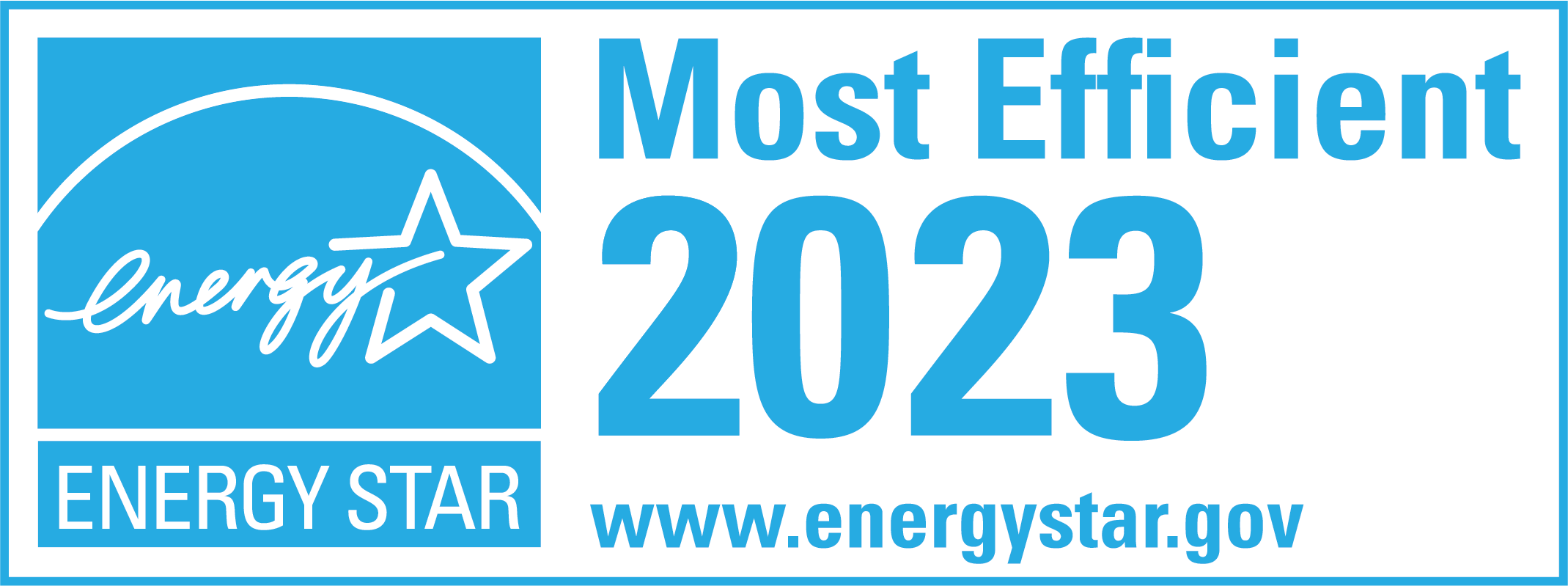Do You Need Energy Star Rated Replacement Windows?
If you are wondering whether you need Energy Star rated replacement windows for your home, you have come to the right place. In this article, we will explore what Energy Star ratings are, the importance of energy efficiency in windows, the differences between Energy Star rated and non-rated windows, and how to evaluate whether it’s time to replace your existing windows. By the end, you will better understand whether Energy Star rated replacement windows are the right choice for you and your home.
Understanding Energy Star Ratings
Before we delve into the details, let’s take a moment to understand what Energy Star ratings mean. Energy Star is a program run by the U.S. Environmental Protection Agency (EPA) that aims to promote energy efficiency and reduce greenhouse gas emissions. Energy Star ratings are given to products, including windows, that meet certain criteria for energy efficiency set by the EPA.
Energy Star ratings have become an important consideration for consumers looking to make environmentally conscious choices. By choosing products with Energy Star ratings, consumers can save money on their energy bills and contribute to the overall reduction of greenhouse gas emissions.
Now, let’s dive deeper into what an Energy Star rating entails specifically for windows.
What is Energy Star Rating?
Energy Star rating measures how energy efficient a product is compared to similar products. When it comes to windows, an Energy Star rating indicates that the windows have been designed and manufactured to reduce energy consumption and increase thermal performance.
Windows play a crucial role in the energy efficiency of a building. They can significantly impact the amount of heat gained or lost, affecting comfort and energy usage. Energy Star-rated windows are designed to minimize heat transfer, keeping the indoor temperature more stable and reducing the need for excessive heating or cooling.
By choosing Energy Star-rated windows, homeowners can enjoy a more comfortable living environment while reducing their reliance on heating and cooling systems, ultimately leading to lower energy bills.
How are Windows Rated by Energy Star?
Windows undergo rigorous testing to receive an Energy Star rating and must meet specific performance criteria. These criteria vary depending on the climate zone in which the windows will be installed. Factors such as U-factor, solar heat gain coefficient (SHGC), and air leakage are considered during the rating process.
The U-factor measures the rate of heat transfer through a window. A lower U-factor indicates better insulation and reduced heat loss. The solar heat gain coefficient (SHGC) measures how much solar radiation is transmitted through the window. A lower SHGC means less heat gain from the sun, which is particularly important in warmer climates. Additionally, the air leakage rating measures the air that can pass through the window, with lower values indicating better sealing and reduced energy loss.
By considering these factors, Energy Star ensures that the windows bearing their rating are energy efficient and suitable for the specific climate conditions in which they will be used. This helps consumers make informed decisions when selecting windows that best meet their energy efficiency needs.
It’s worth noting that Energy Star ratings are not limited to windows alone. The program covers various products, including appliances, lighting, and buildings. This comprehensive approach allows consumers to make energy-efficient choices across various aspects of their lives.
In conclusion, Energy Star ratings provide consumers with a reliable way to identify energy-efficient products, such as windows, that the EPA tested and verified. By choosing Energy Star-rated windows, individuals can contribute to a more sustainable future while enjoying the benefits of reduced energy consumption and lower utility bills.
The Importance of Energy Efficiency in Windows
Windows play a significant role in the overall energy efficiency of a home. They can help reduce energy consumption or become a major heat loss or gain source. By installing energy-efficient windows, you can enjoy several benefits:
The Role of Windows in Energy Conservation
Energy-efficient windows are designed to minimize heat transfer between the inside and outside of your home. This means that during the winter, they can help retain heat inside your home, reducing the need for excessive heating. Similarly, in the summer, energy-efficient windows can block out unwanted heat from entering your home, reducing the reliance on air conditioning.
But how exactly do energy-efficient windows achieve this? Let’s delve deeper into their design. These windows are typically made with multiple panes of glass, separated by an insulating gas such as argon or krypton. This gas is a barrier, preventing heat from passing through the glass. Additionally, energy-efficient windows often have low-emissivity (low-e) coatings, which reflect heat into the room while allowing natural light to pass through. These coatings help to reduce heat transfer further, making your home more comfortable and energy efficient.
Furthermore, energy-efficient windows are also equipped with effective weatherstripping and tight seals. These features prevent drafts and air leakage, ensuring your home remains well-insulated. Energy-efficient windows help maintain a consistent indoor temperature by minimizing air infiltration, reducing the need for constant adjustments to your heating or cooling systems.
How Energy Efficient Windows Save Money
By reducing the energy required for heating and cooling, energy-efficient windows can lead to substantial cost savings on your energy bills. Over time, these savings can offset the initial investment of installing new windows.
Let’s take a closer look at the potential financial benefits. According to the U.S. Department of Energy, energy-efficient windows can save homeowners anywhere from $126 to $465 per year on energy costs. These savings can vary depending on factors such as the climate, the size of the home, and the efficiency of the windows installed.
Moreover, energy-efficient windows can also increase the overall value of your home. Potential buyers increasingly prioritize energy efficiency when searching for properties, and having energy-efficient windows can be a major selling point. A National Association of Realtors study found that energy-efficient windows were among the top ten most desired home features for buyers.
It’s important to note that the benefits of energy-efficient windows extend beyond financial savings. By reducing your energy consumption, you are also contributing to a more sustainable future. Energy efficient windows help to lower greenhouse gas emissions associated with energy production, making them an environmentally friendly choice.
In conclusion, energy-efficient windows offer numerous advantages for homeowners. They not only improve your home’s energy efficiency but also provide cost savings, increase property value, and contribute to a greener planet. Investing in energy-efficient windows is a wise decision to benefit your wallet and the environment.
Comparing Energy Star Rated Windows and Non-Rated Windows
Now that we understand the importance of energy efficiency in windows let’s compare the performance and cost differences between Energy Star rated windows and non-rated windows.
Performance Differences between Rated and Non-Rated Windows
Energy Star rated windows typically offer superior performance compared to non-rated windows. They are designed to provide better insulation, reduce condensation, and minimize air leakage. This leads to improved comfort and energy savings for the homeowners.
Cost Differences between Energy Star Windows and Non-Rated Windows
While Energy Star rated windows may have a higher upfront cost compared to non-rated windows, the long-term energy savings they provide can outweigh the initial investment. Additionally, many utility companies offer incentives and rebates for installing Energy Star rated products, reducing the overall cost.
Evaluating Your Current Windows
Before deciding between replacing your windows, evaluating their condition and energy efficiency is essential.
Signs Your Windows Need Replacing
If you notice drafts, water leaks, or difficulty opening and closing your windows, these could be signs that it’s time for replacement. Additionally, old or single-pane windows are generally less energy efficient, and replacing them with Energy Star rated windows can significantly improve your home’s energy performance.
Assessing the Energy Efficiency of Your Existing Windows
To determine the energy efficiency of your existing windows, you can perform a simple inspection. Look for gaps between the window frames and the surrounding walls, check for any cracks or broken glass, and assess the quality of the weatherstripping. If you find any issues, it’s likely that your windows are not providing adequate insulation and should be replaced.
The Long-Term Benefits of Energy Star Rated Windows
While the upfront cost of Energy Star rated replacement windows may be higher, their long-term benefits make them a worthwhile investment. Improved energy efficiency, increased comfort, and lower energy bills are just a few of the advantages you can enjoy.
In conclusion, if you are concerned about energy efficiency and saving money on energy bills, Energy Star rated replacement windows are worth considering. They offer superior performance, reduce energy consumption, and can enhance the overall comfort of your home. By evaluating your existing windows and understanding the benefits of energy-efficient windows, you can make an informed decision that will benefit your wallet and the environment.
Call us at 214-399-9592 to discuss window pricing and availability. Our replacement window services are limited to North Texas cities, from Irving and Dallas to Frisco and Rockwall.






